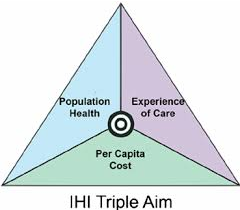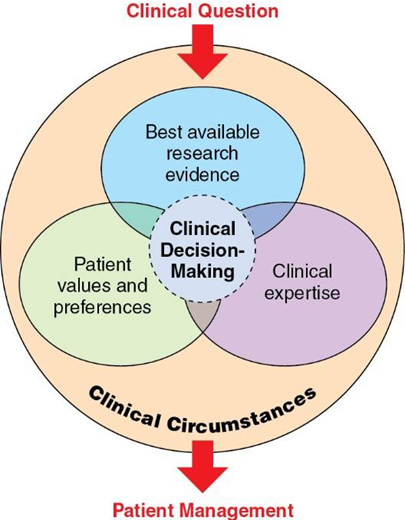Research Methods I: Key Terms/Concepts
1/31
Earn XP
Description and Tags
For test 1
Name | Mastery | Learn | Test | Matching | Spaced |
|---|
No study sessions yet.
32 Terms
Goal of Triple Aim
improving the individual experience of care
improving the health of populations
reducing the per capita costs of care for populations

quantitative research
based on a philosophy of logical positivism, in which human experience is assumed to be based on logical and controlled relationships among defined variables. It involves measurement of outcomes using numerical data under standardized conditions.
may be obtained using formal instruments that address physical, behavioral, or psychological parameters, or by putting subjective information into an objective numerical scale
advantage of this approach: the ability to summarize scales and to subject data to statistical analysis.
qualitative research
strives to capture naturally occurring phenomena, following a tradition of social constructivism
themes, words, understanding different types of narratives
focused on the belief that all reality is fundamentally social, and therefore the only way to understand it is through an individual’s experience
scientific method
based on idea that scientific truths exist and can be studied
a systematic, empirical, and controlled critical examination of hypothetical propositions about the associations among natural phenomenon
Step 1 of the Research Process: Identify the Research Question
formulating a specific question that provides an opportunity for study
Step 2 of Research Process: Design the Study
design study and plan method of implementation
who will be studied and how will they be chosen?
completion of 1 and 2 will develop research proposal: explains research aims, sampling methods, and ethical considerations
Step 3 of Research Process: Implement the Study
data collection; implement plans designed in steps 1 and 2
Step 4 of the Research Study: Analyze the Data
reduce and collate information into useful forms for analysis
involves analyzing, interpreting, and drawing valid conclusions about the obtained data
Step 5 of Research Process: Disseminate Findings
researchers have a responsibility to share their findings with the appropriate audience so that others can apply the information either to clinical practice or further research
paradigms
set of assumptions, concepts, or values that constitute a framework for viewing reality within an intellectual community
paradigm shifts: fundamental transitions in the way disciplines think about priorities and relationships, stimulating change in perspectives and fostering preferences for varied approach to research
efficacy
the benefit of an intervention as compared to a control, placebo, or standard program, tested in a carefully controlled environment with the intent of establishing cause and effect relationships
ideal conditions
incorporates random assignment to groups to minimize bias
specific Tx protocol
strict inclusion and exclusion criteria
effectiveness
the benefits and use of procedures under “real-world” conditions in which circumstances cannot be controlled within an experimental setting
real world conditions
more generalizable
Tx more reflective of practice
inclusion and exclusion criteria not as strict, ex: allows for comorbidities
International Classification of Functioning, Disability and Health
portrays health and function in a complex and multidimensional model, consisting of 6 components in 2 domains
used to reflect potentially needed health services, environmental adaptations, or guidelines that can maximize function for individuals or create advantageous community services
useful for health promotion, prevention of illness and disability, and for the development of relevant research outcomes
acknowledges occupations are at the heart of person’s health

intraprofessional
members of one profession work together, sharing information through the lens of their own profession
multiprofessional
an additive process whereby members of multiple professions work in parallel alongside each other to provide input, making complementary contributions, each staying within their own professional boundaries, working separately on distinct aspects of the problem
interprofessional
members of multiple professions work together, contributing their various skills in an integrative fashion, sharing perspectives to inform decision making
systematic reviews vs. meta analysis vs. scoping reviews
systematic reviews | meta-analysis | scoping reviews |
present comprehensive analysis of the full range of literature on a particular topic, usually an intervention, diagnostic test, or prognostic factors | step beyond systematic review; applying a process of statistically combining the findings from several studies to obtain a summary analysis | similar to systematic reviews but incorporating a broader range of study designs and data-gathering methods to comprehensively synthesize evidence, often with aims of informing practice, programs, and policy and providing direction to further research |
typically restrict the inclusion of studies based on design criteria to assure a rigorous analysis of the evidence |
explanatory vs. exploratory vs. descriptive research
explanatory | exploratory | descriptive |
utilizes various types of experimental designs to compare two or more conditions or interventions | observational designs are used to examine a phenomenon of interest and explore its dimensions, often in populations or communities, and to examine how it relates to other factors | researcher attempts to describe a group of individuals on a set of variables, to document their characteristics |
Different design approaches offer varied levels of control to establish cause and effect between interventions and outcomes. These trials address both efficacy and effectiveness | may involve the use of questionnaires, interviews, direct observation, or the use of databases. |
basic vs. applied research
basic: directed towards the acquisition of new knowledge; includes research in labs on animals; often focused on theory and understanding mechanisms of disease or therapies
applied: clinical research; used to advance the development of new diagnostic tests, drugs, therapies, and prevention strategies
translational research
the direct application of scientific discoveries into clinical practice
taking knowledge from “bench to bedside”
randomized control trials (RCTs)
considered "gold standard” design to study the efficacy of a new therapy by comparing it to a placebo or standard care
to qualify, 3 conditions must be met:
2 or more groups, an experimental and a control/comparison group
participants must be randomly assigned to the conditions
an intervention must be applied to the experimental group
pragmatic (practical) clinical trials (PCTs)
incorporate measures of function or quality of life that are considered more relevant for patient satisfaction to understand if Tx have a meaningful effect on patient outcomes
effectiveness trial used to look at interventions under natural practice conditions to make sure findings from RCTs translate to “real-world care”
practice-based evidence (PBE)
the systematic collection of patient-reported measures associated with a particular treatment goal or desired outcome.
considers client based practice
naturally collecting evidence by doing deeper dives on narrative of the client
purpose: to objectively understand the relationship between your actions as an OTR and the unique response of your clients on an individual basis
outcomes research
umbrella term to describe studies that focus on the impact of results of healthcare practices and interventions
patient-reported outcome measure (PROM)
any report of the status of a patient’s health condition that comes directly from the patient, without interpretation of the patient’s response by a clinician or anyone else
patient-centered outcomes search (PCOR)
form of CER
has distinct goal of engaging patients and other stakeholders in the development of questions and outcome measures, encouraging them to become integral members of the research process
primary vs. secondary outcomes
primary: used to arrive at a decision on the overall result of the study and that represents the greater therapeutic outcome
secondary: other endpoint measures that may also be used to assess the effectiveness of the intervention as well as side effects, costs, or other outcomes of interest
evidence-based practice (EBP)
the integration of clinical expertise, internal and external evidence, and client perspectives to inform clinical decision making
goal is to create a culture of inquiry and rigorous evaluation that provides a basis for balancing quality with the uncertainty that is found in practice
evidence does not make the decision, the clinician and patient do that together with the relevant evidence to inform them for optimal shared decision making

internal vs external decision making
internal: as a practitioner, you are still learning; some interventions may "fail"; as you're learning you are understanding and building own internal evidence about what you think works on your own
external: articles; ex: AJOT articles, appraising it to use in practice and copying what they do in your practice
background question
related to etiology or general knowledge about a patient’s condition, referring to cause of a disease or condition, its natural history, its signs and symptoms, or the anatomical mechanisms that relate to pathophysiology
who what when where why how
foreground questions
more common type of clinical question for EBP; focuses on specific knowledge to inform decision making about patient management; ex: PICO
knowledge translation
process of identifying clinical problems and accelerating the application of knowledge to improve outcomes and change the provision of care
research that’s done gets utilized by the workforce
involves adaptation of quality research into relevant priorities
creation and application of knowledge
may take years to implement evidence into practice